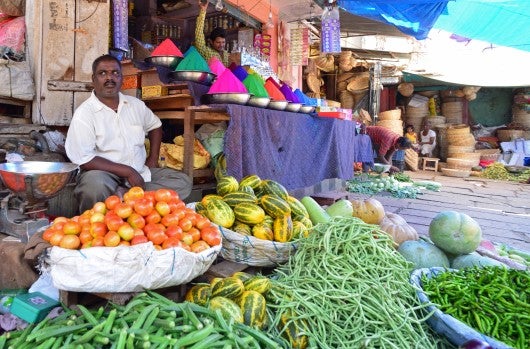Inflationary Pressures or New Opportunities: Will Indian Industry Buckle or Bounce?
S Narayan
27 August 2020Summary
The Indian economy is at the crossroads. While there is worry about inflation, unemployment and rising prices, there is also healthy activity in the financial markets and growing interest among foreign investors. Will Indian businesses embrace these new opportunities?
The Reserve Bank of India (RBI) has expressed concerns over the inflationary trends in the Indian economy, and at its last monetary policy review in early August 2020, decided to hold all interest rates at current levels. The RBI had been resorting to an expansion of liquidity in the past six months, both through reduction in the prime lending rates as well as through reduction in repo rates. A halt to these operations signifies a wait-and-see approach by the RBI.
High inflation at a time when the economy is tanking is not a good sign. Inflationary pressures have risen in food prices as well as in non-food items. The food price inflation appears to be accounted for by increases in prices of vegetables and edible oils. Cereal prices are steady, given the abundant availability of rice and wheat. The spike in other food items can be attributed to rising transportation costs due to increases in prices of fuel and logistics bottlenecks. On one end there are stories of farm gate prices of tomatoes and carrots crashing, while on the other, retail prices remain largely unchanged. It could be argued that food price inflation increase is a transient phenomenon, due to supply bottlenecks. There is also evidence that the non-availability of skilled labour, due to migrants not yet returning to work, and rising wage rates are increasing the costs in production.
At the same time, bond yields are rising, signifying hardening of interest rates. The RBI 30- year paper issuance has been at 6.7596 per cent as against an estimated 6.65 per cent. The RBI signals of higher yields indicate that their dovish stand is under pause.
Inflationary pressures at a time that the economy is reeling under the damage caused by the COVID-19 pandemic does not augur well. The effort of the government in the last few months has been to loosen credit flows, provide liquidity with banks to support lending to business and industry and, in general, through reduction of deposit rates, to encourage spending and consumption. If there is inflation around the corner, then these efforts will come to naught. In other countries where there has been considerable monetary easing, inflation rates have been very low, enabling interest rates to head southward, and liquidity infusion to support demand creation and business growth.
These factors are liable to slow consumer demand revival as well as capacity additions. This is at a time when the rural economy is doing well, on the back of two successive above normal harvests. However, higher inflation and, therefore, higher input prices, will hit the farmer in terms of cost of production. Also, any more increase in support prices will only further weaken the fiscal balance. The big worry is a period of stagflation when prices rise but output and consumption do not, leading to pressures on livelihood and incomes.
At the same time there are mitigating factors. Though oil prices are firming up, they are still ruling below US$50 (S$68.4) a barrel and transportation demand has yet to pick up. There is healthy activity in the financial markets, with foreign investors emerging net buyers of financial instruments day after day. The foreign exchange reserves are at an all-time high, even though exports have not grown and remittances have slowed down. Currently, there is sufficient cushion in the forex reserves, which can cover India’s one-year import bill.
There is also a growing interest among foreign investors in India. A number of international companies are scouting around various states for suitable opportunities. Apple will manufacture some of its phones from India while Taiwanese companies will make shoes and digital servers for data security here. There is interest in some real estate companies and, of course, the multi-billion dollar deals announced by Reliance Jio have led to foreign exchange inflows. Most of these new investments are meant for export-oriented production and services. There is also a ramp up in agro-based industries especially in creating processed consumer products.
The economy appears to be at the crossroads. While there is the worry of inflation, poor demand and unemployment, there are opportunities in new technologies, manufacturing and defence. Established industry has not indicated which way it will turn – whether it will favour continued protection or embrace new opportunities that are opening up. There is a great thrust on infrastructure, with both public and private players announcing large investments. The next quarter results of companies will indicate the nature of the revival.
. . . . .
Dr S Narayan is Visiting Senior Research Fellow at the Institute of South Asian Studies (ISAS), an autonomous research institute at the National University of Singapore (NUS). He is a former Chief Economic Advisor to the Prime Minister of India. He can be contacted at snarayan43@gmail.com. The author bears full responsibility for the facts cited and opinions expressed in this paper.
Photo credit: Wikimedia Commons
-
 More From :
More From :
-
 Tags :
Tags :
-
 Download PDF
Download PDF



